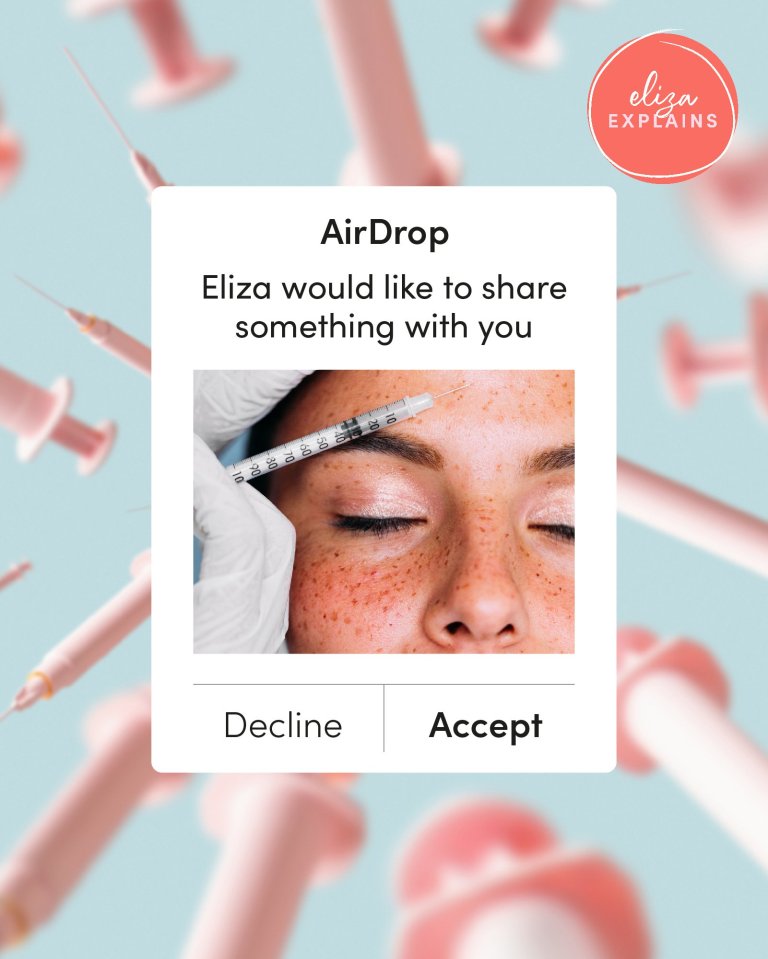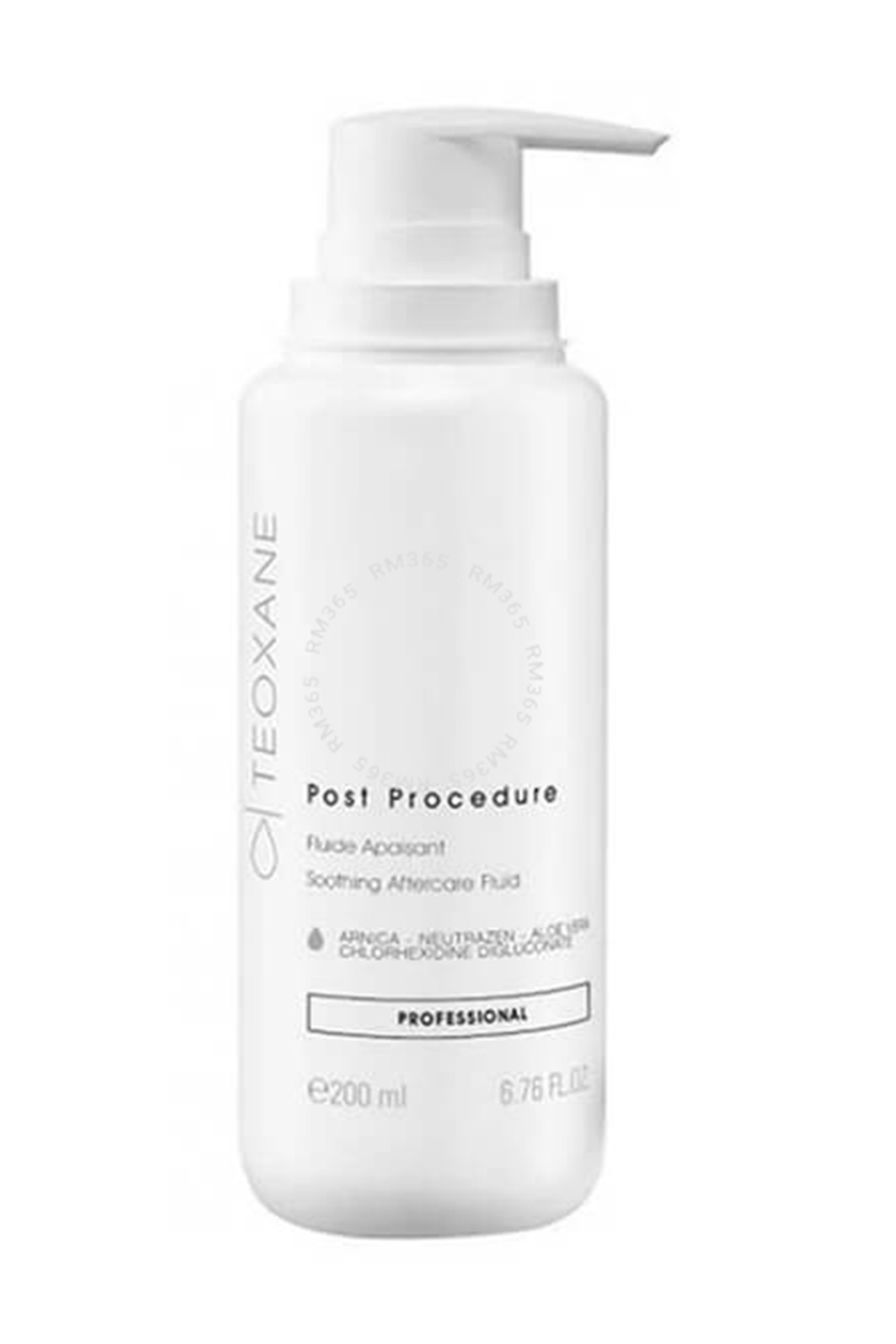Demystifying ingredients, clarifying how to apply products and revealing everything you’ve always wanted to know about skin types; Eliza Explains will help you become a beauty pro.
Botox. It’s an injectable that at my age, for better or worse, I’m starting to think about. But as someone who’s been getting fillers for a couple of years, I have to admit that I’m less clued up about the world of Botox.
For this reason, I set out to discover all I’d need to know in order to consider the stuff in future. What is Botox actually made of? How does it work, exactly? And where could I get the stuff done in my face if I wanted to?
I spoke with my trusted go-to injector Dr Christine Hall, who works at the TakTouk Clinic (owned by another of my industry favourites, Dr Wassim TakTouk) to learn more about Botox, and to answer any questions you may also have.
What actually is Botox?
Let’s start with the basics. If you’re a total newbie to Botox (join me over here), you may be interested to know more about what it’s actually made of.
“Botox is made by a company called Allergan and it is the trade name for Botulinum toxin – like how Panadol is the trade name of paracetamol,” explains Dr Christine.
“It is a protein that comes from bacteria, and it has been used safely in medicine for over 30 years,” she adds.
Interestingly, Botox was only ‘officially’ approved for cosmetic use in the UK in 2002, after being used previously for medical conditions in the late ‘70s.
How does Botox work?
Botox cleverly works to temporarily ‘freeze’ muscle movement, which Dr Christine explains in full:
“Normally, our nerves carry signals to our muscles, which make them move. When our muscles move, they create wrinkles that over time become permanent,” she begins.
“When you inject Botox into key muscles, some of these signals are blocked and so the movement of that muscle and the appearance of lines are reduced.”
How often do you have to get Botox for it to work?
It’s important to remember that Botox treatments are not permanent. In general, Botox tends to last less effectively than fillers, which (depending on the area) can last between 6-18 months usually.
“Botox generally needs to be repeated every 3-4 months, as the body forms new nerve endings that gradually cause the muscle to contract again,” says Dr Christine.
Where can you get Botox done?
Originally known most for forehead and frown lines, Botox has expanded massively in recent years, and it seems as though there’s barely an area or concern you can’t get it done [for] now.
Dr Christine’s list includes:
- Forehead lines
- Frown lines
- Smile lines or crow’s feet
- Lip flip
- Gummy smile
- Brow lift
- Downturned corners of the mouth
- Nasal flaring
- Bunny lines across the nose
- Chin to reduce dimpling and the crease that forms
- Neck lift or the Nefertiti lift
- Hyperhydrosis (Sweating) of the armpits
- Masseter muscle for teeth grinding
Does Botox hurt?
One of the most common questions about Botox is whether it hurts. As mentioned, I’ve never had Botox used for lines or wrinkles, but I have on one occasion had a small amount put into my chin to accompany my fillers to boost its effects. In general, I found this injection to be less painful than the filler going in.
“Botox is administered via an injection, so it is uncomfortable, but I wouldn’t go as far as to say it is painful as the needle is so small – only 1/5th of a millimetre in diameter,” says Dr Christine.
“I am always very honest with my patients and there are some treatments that I will openly tell them will hurt, but Botox isn’t one of them.”
How much does Botox cost?
“The price of Botox treatments can vary considerably, depending on the area being treated, the clinic location and the expertise and qualifications of the person who is injecting but typically, you might expect to pay between £250 to £400,” shares Dr Christine.
How much downtime does Botox require?
Overall with injectables, I’ve rarely experienced any bruising or swelling; it has always been minor and lasted only a few days at most.
Dr Christine says that immediately following the injections you will find small, slightly red bumps where the Botox has been injected, but these settle very quickly (usually within 10 minutes).
“Sometimes you can get bruising if a small blood vessel is knocked but this will be very small and easily covered with makeup if necessary,” she adds.
What should you do before and after Botox appointments?
As these are minor procedures you don’t have to prep or avoid too much afterwards, but there are a few things recommended.
“We ask patients to avoid alcohol, exercise and anything that gets you too hot and sweaty as these will all increase the risk of bruising,” says Dr Christine. “So do painkillers like ibuprofen and aspirin, so these are also best avoided.”
“After the procedure, your practitioner will clean the area that has been treated; we apply Teoxane Post-Procedure Balm, which contains arnica and antimicrobial agents. We then ask our patients to avoid touching the area or applying other skincare or makeup for a minimum of 8 hours, but ideally 24.”
Are there any dangers to Botox?
When I talk to those considering Botox, I often hear of fears about muscles freezing or eyes drooping. But how founded are these concerns?
“Botox is a very safe drug but like most things there are some adverse results such as the dreaded dropped brow or raised eyebrow, which occur when Botox is administered incorrectly,” explains Dr Christine.
“To minimise this risk, make sure you see a practitioner who has the relevant medical training and knowledge of anatomy to be able to deliver Botox safely.”
Where can you find a place to get Botox done?
Which leads on nicely to her next point:
“Look for someone who is qualified, read reviews, check out the clinic and ask around – you’ll be surprised how many friends, colleagues or acquaintances have had Botox without you realising.”
“It is the most common treatment administered at our clinic and many new patients will come in saying that they had no idea so many of their friends had had it done!”
Unsure where to start? Browse the Professional Standards Authority (PSA) or the British College of Aesthetic Medicine (BCAM) to see which doctors meet certain standards.











